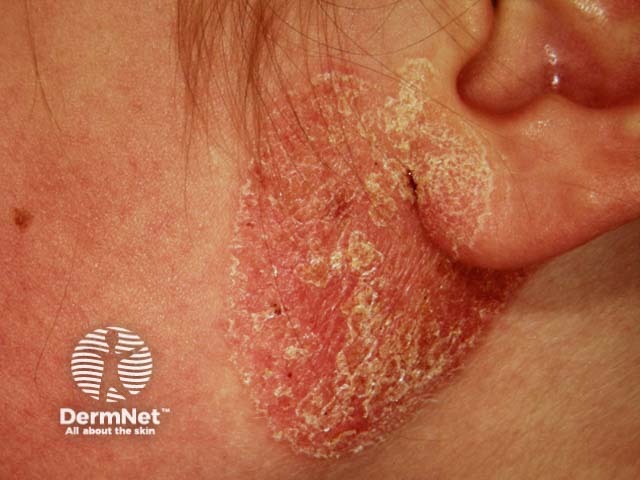Main menu
Common skin conditions

NEWS
Join DermNet PRO
Read more
Quick links
Skin conditions due to fungi, bacteria and viruses – 10 cases
This quiz will test how good you are at diagnosing skin conditions due to fungi, bacteria and viruses.
For each of the ten cases, study the image(s) and then answer the questions. You can click on the image to view a larger version if required.
Each case should take approximately 2 minutes to complete. There is a list of suggested further reading material at the end of the quiz.
When you finish the quiz, you can download a certificate.
Case 1


What is the diagnosis?
Infection with a dermatophyte fungus. The girl has tinea faciei and her brother has tinea corporis and tinea capitis.
How can the diagnosis be confirmed?
Tinea infections are often suspected clinically but the diagnosis should be confirmed by mycology because of a wide differential diagnosis, and to select appropriate treatment.
The skin lesions were lightly scraped with a skin curette and the scale collected in a black, specially designed envelope. A few infected hairs were plucked out in the brother's case. The specimens were sent to the laboratory for potassium hydroxide microscopy and fungal culture. Interim microscopy reports indicated fungal elements were present. One month later, the laboratory cultured Microsporum canis from all specimens.
As the differential diagnosis of the facial plaque included infection with Staphylococcus aureus, blue-top swabs were also taken for microscopy and bacterial culture. These were negative.
What treatment should be recommended?
There are numerous suitable topical antifungal agents for dermatophyte infections: e.g. ciclopirox, clotrimazole, econazole miconazole, terbinafine, tolnaftate and Whitfield's. The available systemic antifungal agents are terbinafine, itraconazole, ketoconazole and fluconazole. Griseofulvin is no longer distributed in New Zealand.
M. canis is the cause of cat ringworm. Topical antifungal agents may be adequate for localised infections. A four-week course of miconazole cream proved successful for the girl. The brother was prescribed a four-week course of oral itraconazole. Fungal hair infections should always be prescribed oral therapy because topical antifungals do not penetrate deeply enough and permanent bald areas can result from untreated infection. The veterinarian used Wood's light examination to confirm the children's kitten was the source of their infection. The kitten was treated with oral griseofulvin.
